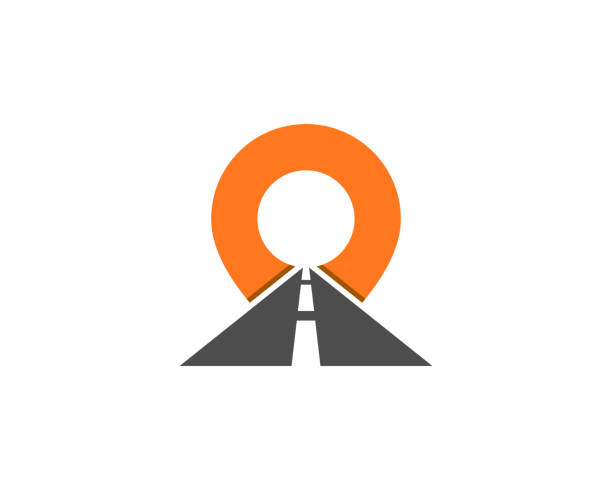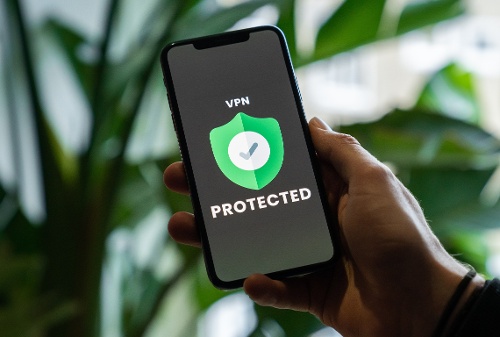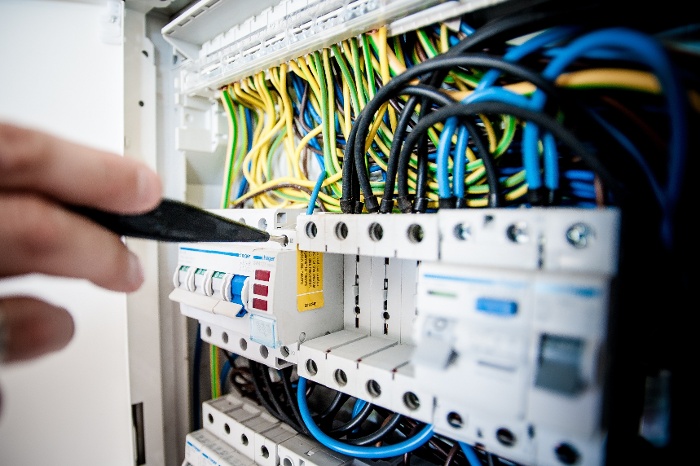

IoT connectivity is the backbone of your predictive maintenance solution. It enables a range of sensors to transmit real-time performance data to an application with machine learning and predictive analytics capabilities, so you can extend the life and utility of assets, dramatically reduce costs, and improve safety and compliance.
But simply having IoT connectivity isn’t good enough. Right now, there are numerous ways that your connectivity solution could be hindering your predictive maintenance processes and preventing you from maximizing these benefits. A surprising number of OEMs, system integrators, and their customers have learned to put up with sub-par connectivity because they didn’t know there was a better option.
Whether you jump into connectivity portals every day or you just need your solution to work, your connectivity solution should make your predictive maintenance solutions more useful, not less.
Here are some of the connectivity challenges manufacturers like you are dealing with, plus how emnify helps you resolve them.
1. You have multiple connectivity management portals
Sometimes when you deploy in multiple countries, you have to use different carriers to manage your deployments. Every carrier has their own connectivity portal, so the more carriers you use, the more portals you need. And unfortunately, some carriers have better portals than others. Some are clunky and cumbersome, and they don’t always have the functionality you need. The user experience can change significantly from one portal to the next, and you may find that the quality of support and service you can offer your customers varies by country. The more you expand and the more customers you accumulate, the more overwhelming it becomes to manage your predictive maintenance solution.
But that’s the price you pay for being a successful global enterprise, right? Wrong. If you’re using more than one connectivity management system to troubleshoot your devices, control their connectivity, and keep them up-to-date, that’s a problem you don’t need to have.
emnify isn’t a traditional cellular carrier. Our global IoT SIM cards enable your devices to connect to more than 540 networks in over 180 countries. With our SIMs, you use the same connectivity management platform regardless of the carrier a device is connected to.
Sure, traditional carriers can give you access to networks from other carriers, too. They have some roaming agreements to ensure you have coverage in multiple countries. But every time you need to deploy in a country they don’t have coverage in, you need a new contract with a new carrier—and that means you get another portal or API to juggle.
Or you could just use ours, and manage all your connectivity within a single pane of glass.
Not to mention, when OEMs and system integrators see what our portal looks like and what it’s capable of, it’s hard to imagine using anything else. Why deal with the hassle of using different portals (of varying quality) for different deployments when you can do everything you need from the same streamlined, intuitive platform?
2. Your customers' downtime is too high
In manufacturing, even an hour of network downtime could cost thousands of dollars in lost productivity. And whether your customers stop production to avoid the risk of unforeseen breakdowns, or they continue business as usual without their predictive maintenance sensors, they’re taking risks they shouldn’t have to. They’re either stuck in the dark ages, using reactive maintenance to repair broken equipment, or they could risk delaying orders, underdelivering on production, losing customers, or causing other significant problems. Imagine a power plant having to choose between hitting their quotas and risking a breakdown or shutting off equipment and missing quotas until your predictive maintenance application is back online.
You don’t want to give your customers the choice between flying blind and missing their objectives.
Even if you’re already using a highly reliable connectivity solution, if your uptime can be higher, it should be. And a competitor that uses a more reliable solution can easily leverage that gap to snatch up more market share.
Whether you use it as a backup or as your primary connectivity solution, emnify has an industry-leading 99.95% guaranteed uptime. Whatever your uptime is right now, odds are, we can improve it. Put that claim to the test with a free trial, and you can make reliability part of your marketing.
3. Your provider's customer service thinks you're a consumer
Here’s a problem we’ve seen OEMs and system integrators run into when they use traditional cellular carriers for cellular IoT: they have to spend an hour on the phone just to break out of the consumer-oriented customer service flow. You could have thousands of SIM cards with them, but their support department is optimized for the millions of consumers who call because their phone charger isn’t working or they don’t understand a charge on their bill.
It can take a long time simply to get through to someone who understands that you’re not a consumer. And if you’ve ever called a carrier for support, you know you’re going to repeat that same interaction every time you call and every time you get transferred to another support rep. Meanwhile, your IoT sensors don’t have a connection, and your customers aren’t getting a service they depend on.
For IoT businesses, “time is money” on a whole other scale, so we prioritize closing tickets and resolving issues quickly. We’re your connectivity partner. Our support team is frequently cited by customers as one of the main reasons they switch to and stay with emnify. We offer same-day, 24/7 premium support and you’ll always talk to an IoT expert.
4. Your carrier doesn't have dedicated IoT support
You don’t want your connectivity provider to treat your business and your problems like novelties. You want them to say, “Oh, we recently helped another manufacturer navigate this same challenge. Here’s what needs to happen.” That’s what you get with us.
But use a consumer-oriented connectivity provider, and when you do finally get someone to understand what kind of customer you are, you’re still talking to someone who either doesn’t understand your problems (because they still primarily serve consumers) or someone who doesn’t normally do customer service (because they’re the only in-house person who has experience with businesses like yours).
A manufacturer once shared with us that when they called their connectivity provider, their customer service reps didn’t even know how to troubleshoot devices that don’t have screens. As you can imagine, this fundamental lack of knowledge makes even answering basic questions take significantly longer.
That’s not the experience you get with a specialized IoT connectivity provider like emnify. When you call emnify, a knowledgeable IoT expert answers the phone. And when you look for help on our website, you’ll find resources from IoT experts for businesses like yours.
5. You can't always get support in the language you need
Working directly with local network operators may seem like a good way to get the precise coverage you need for a deployment. But as you go global and take on more international customers, this creates a new challenge: does the local French carrier you’re using speak your language? Do you settle for a lower quality carrier because they offer support in your language? In some countries (like Mexico), you have to have a SIM profile for a local carrier. What then? What happens when you need to troubleshoot something? Do you hire someone solely for this situation?
Working with a global solution like emnify still gives you coverage from local carriers. Our partnerships are what make it possible for us to offer cellular connectivity in more than 195 countries. But anytime you need help with connectivity, you interact with us, and we resolve your issue just like a local MNO. We offer this same expert support in multiple languages, and you get full network visibility in a single pane of glass.
6. You don't have a backup network when systems fail
In industrial IoT, your devices often wind up in highly advanced smart factories with hardened network infrastructure. But let’s face it: even the best networks fail. And whether you have a hardwired ethernet connection or your devices connect to your customer’s Wi-Fi, you need a backup in place for when power outages, natural disasters, human errors, cyberattacks, or other unusual circumstances render that network infrastructure unusable.
For some devices, using your customer’s network may be the best solution. That’s fine. But if you’re completely reliant on it, that infrastructure becomes your single point of failure. Imagine if a customer’s network was down, but your devices were still operational—your predictive maintenance capabilities would be out of commission, and they could be taking enormous risks without even knowing it. And who will they blame when your sensors don’t warn them that the vibration levels or temperature is too high, and the equipment breaks?
That’s why OEMs, system integrators, and other manufacturers are turning to cellular IoT connectivity solutions like emnify. Even if your device primarily relies on ethernet, Wi-Fi, or another networking technology, adding a global IoT SIM card ensures that you always have a backup network ready to go—in fact, with coverage from more than 540 carriers in over 195 countries, you’ll often have multiple backup networks available.
When it comes to IoT connectivity, redundancy is vital. It’s far better to have an unnecessary backup than it is to have no backup at all. And with emnify, you only pay for data you use, so while your SIMs will be active just in case, you’ll never have to pay us for data until you need it.
7. It's too difficult to monitor devices in remote environments
Some of your customers will inevitably need to use your product on sites where they don’t have established network infrastructure. There’s no Wi-Fi or ethernet to use. But cellular networks are almost always available. For decades, cellular carriers have been competing all over the world to provide the most complete coverage, and there are multiple carriers in nearly every country. Your devices just have to connect to them.
If your IoT sensors are completely dependent on ethernet, Wi-Fi, or another solution that isn’t already available on-site, your customers have to build or buy the infrastructure before they can take advantage of your predictive maintenance capabilities. And that’s often simply not feasible.
So what happens when you tell your customers that your products won’t work in these locations? Which is more likely: that they’ll pursue another location based on what works for your product, or that they’ll pursue another product based on what works in the location?
Probably the latter.
emnify’s global IoT SIM cards make it easy to connect to carriers wherever you need to deploy. Instead of piecemealing together your solution by adding a new carrier with each deployment in a new country, you get one SIM that works everywhere. Our SIMs are made to support multiple carriers, so they’ll always have service, and whenever there’s redundant coverage (as there usually is), our automatic network selection chooses the network with the strongest signal, so your customers always get the most reliable service.
8. You need different SIM cards for different countries
You want your products to be available and fully functional wherever manufacturers need to use them. Use traditional cellular carriers, and you don’t just have to get a new management portal for every new country you deploy in—you need a new SIM card, too. So whether you’re acquiring a new customer, or a current customer wants to deploy somewhere you don’t have service, you have to add development time to install, configure, and test the new cards, and your inventory management and supply chain become increasingly complex.
Where your customers deploy shouldn’t be a variable that changes your service, development time, or customer experience. And if it is, that’s a weakness your competitors can exploit by using a global solution that was designed for businesses like yours.
When you use emnify’s SIM cards, it doesn’t matter where your customers are—the same SIM cards work on every deployment everywhere in the world. And that solves another problem you may have with using different SIM cards on different deployments. . . .
9. You have to use multiple SKUs for the same product
Every time you use a different connectivity solution (or a different SIM card) on the same product, it fundamentally changes the product and requires you to create a new Stock Keeping Unit (SKU) to delineate the configurations. They’re variations of the same product, but customers have to order the right SKU to ensure they get the variant that works for their deployment.
Wouldn’t it be nice to have a single SKU that works for every deployment? With global SIM cards, the SIM card is always the same. Our SIMs come out of the factory with global coverage. It’s one product, one card, and one SKU that works everywhere.
10. You're spending too many resources on integrations
Some connectivity solutions already integrate with your IoT stack. Others don’t. And even with an API, which drastically reduces the complexity and time it takes to build integrations yourself, you’re still investing your limited resources in something other than your core product. Building integrations comes with an opportunity cost. You’re either increasing your time-to-market or sacrificing capabilities at launch.
emnify streamlines the integration process with automated cloud integrations and even no-code integrations with Zapier, making it easier than ever for you to bring connectivity management and analytics to the business applications you use all the time. Now your team can focus on your product.
11. You can't tell if the equipment or the network is causing the issue
Not all connectivity management solutions are created equal. With some connectivity providers, you may see that your sensors are down, but you can’t tell if there’s a problem with the network or the equipment. So do you send someone from maintenance or IT? Or both? Either way, you’re either taking a risk that you won’t have the right professional on site to resolve the issue or you’re paying significantly more whenever there’s a problem (mechanical or technical).
emnify’s connectivity management portal gives you advanced visibility into connectivity problems. We can do a thorough health check of your network to quickly resolve connectivity issues. And if the network looks good, you can confidently send a maintenance professional to handle the problem.
See how emnify improves your predictive maintenance solutions
Thousands of IoT businesses use emnify to keep their devices connected all over the world. Whether you’re an OEM or system integrator, we’ll help you provide better, more reliable predictive maintenance services for your customers.
Talk to one of our experts today.
About emnify
From reliable connectivity and secure remote access to machines to powerful APIs, automated cloud integration and advanced security features, emnify provides you with all the tools you need to deploy and operate your smart machines for predictive maintenance anywhere and at any scale.
Learn more about how we can help your predictive maintenance application or contact our cellular IoT expert to book a free consultation today.
Get in touch with our IoT experts
Discover how emnify can help you grow your business and talk to one of our IoT consultants today!

Nathan Schlaffer
More than 7 years of experience translating hi-tech connectivity and SaaS products for Internet of Things into simple and compelling use cases across a broad range of vertical markets from manufacturing to transportation to oil and gas.



